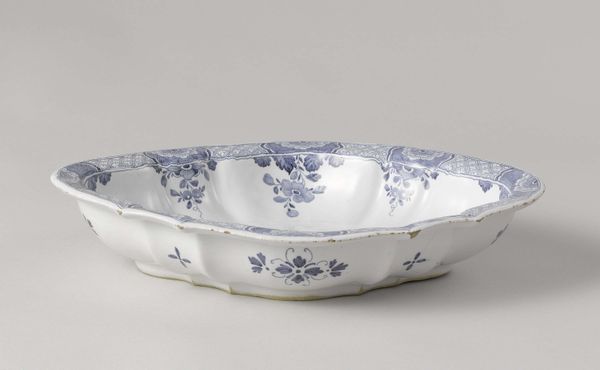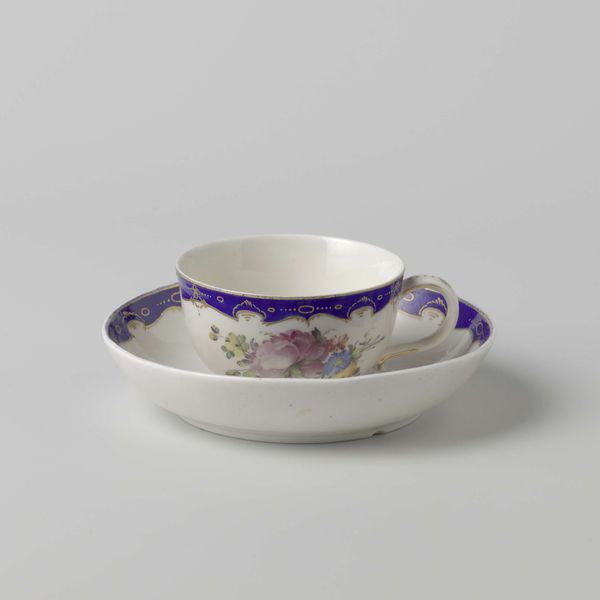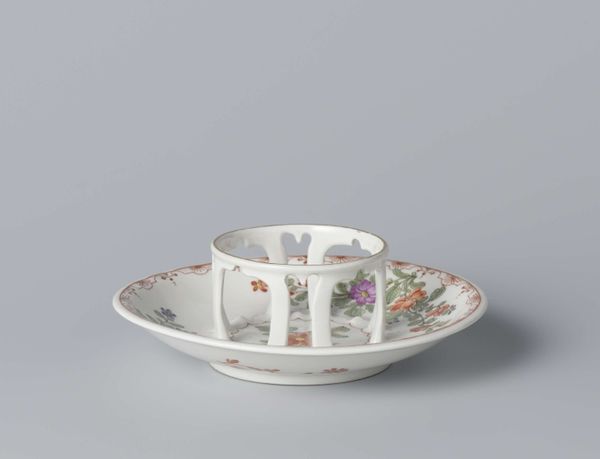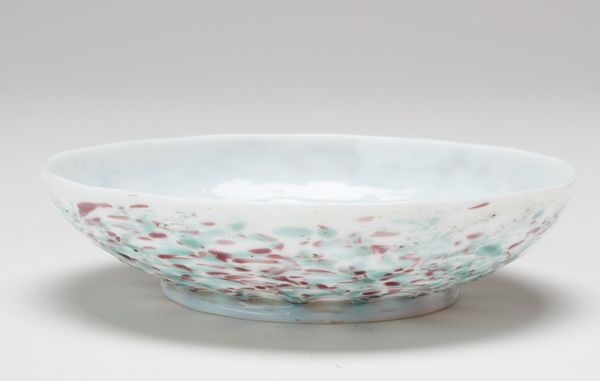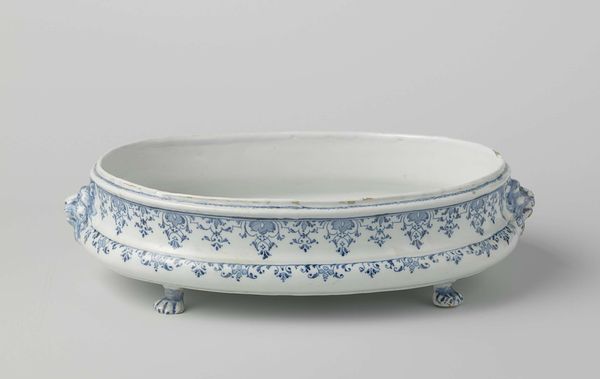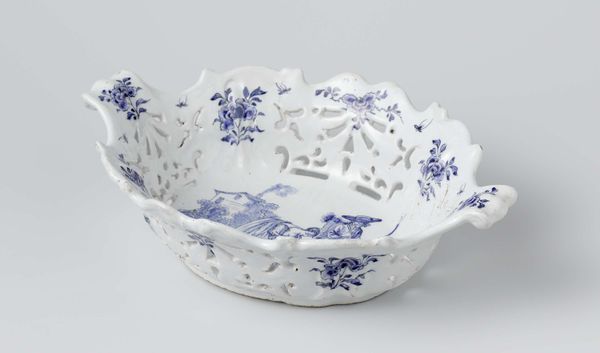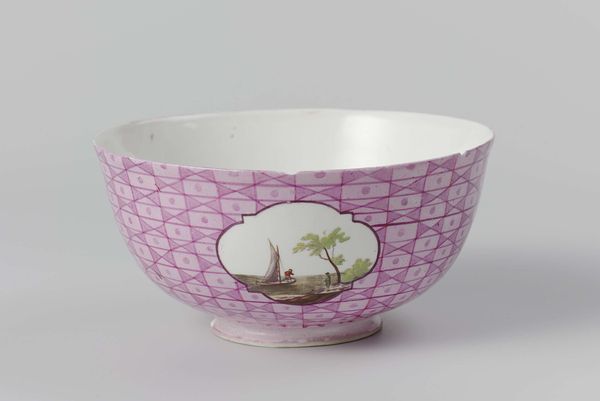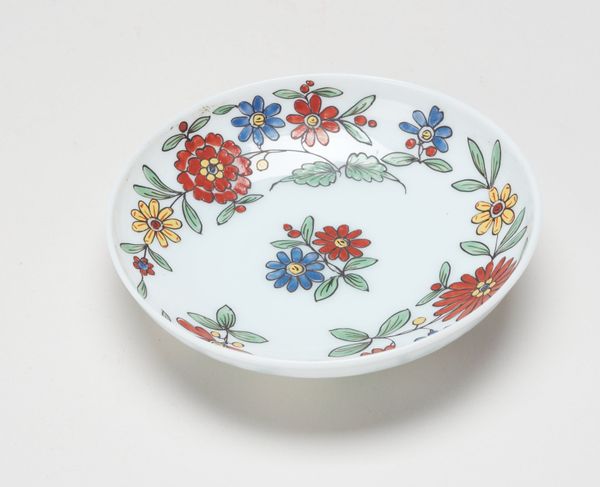
ceramic, porcelain
#
ceramic
#
porcelain
#
decorative-art
#
rococo
Dimensions: height 5 cm, width 24.7 cm, depth 18.1 cm, width 17.3 cm, depth 11.5 cm
Copyright: Rijks Museum: Open Domain
Editor: This is a beautiful porcelain dish from Chantilly, around 1750. I'm drawn to the intricate blue and white pattern on the inside – it’s quite delicate, and the flower sprays add a touch of elegance. How should we approach discussing it? Curator: Let’s focus on the labor involved. This wasn't mass-produced; each piece of porcelain, each brushstroke, speaks to specialized skills. Consider the materials: where did the porcelain clay come from, and how was it processed? Editor: I hadn't thought about the origins of the raw materials. And what about that diaper pattern? Curator: Exactly. Diaper patterns were often used to fill space on ceramics. This wasn’t merely aesthetic; it’s indicative of production processes in factories and workshops, where value was measured based on volume. Did these repeating designs allow for quicker production of the wares? Editor: That's fascinating! So the dish represents a balance of artistic skill and economic imperative. Did these dishes serve only aristocratic purposes? Curator: Not entirely. Porcelain, initially exclusive, became increasingly accessible through trade and local manufacturing. Consumption patterns reflect social stratification, blurring the lines between high art and accessible craft. Editor: This gives me a whole new perspective on appreciating art; thinking about the work beyond just the final appearance. Thank you. Curator: Indeed. Analyzing materiality allows us to understand cultural production beyond traditional notions of the 'artist genius,' examining labour as a valuable feature, providing more understanding of value.
Comments
No comments
Be the first to comment and join the conversation on the ultimate creative platform.

